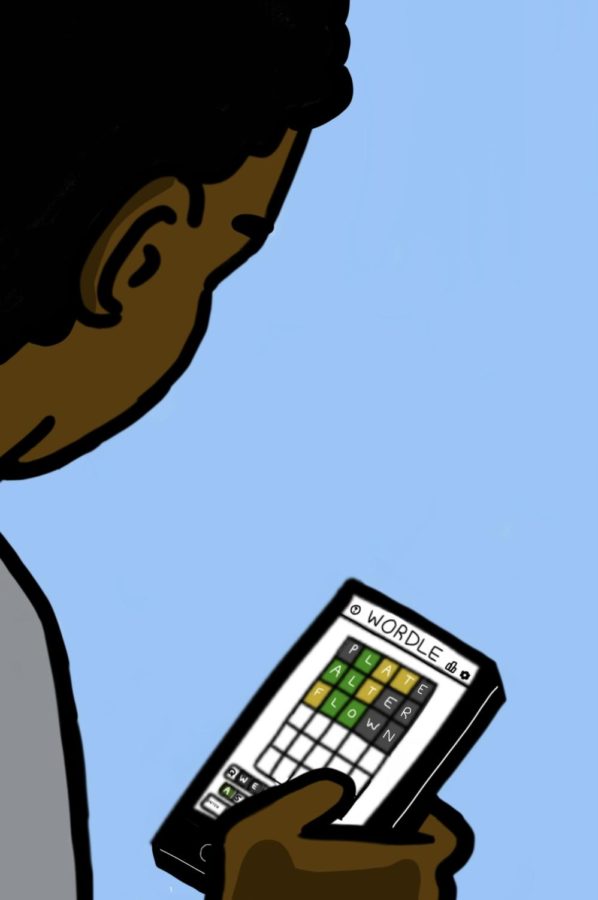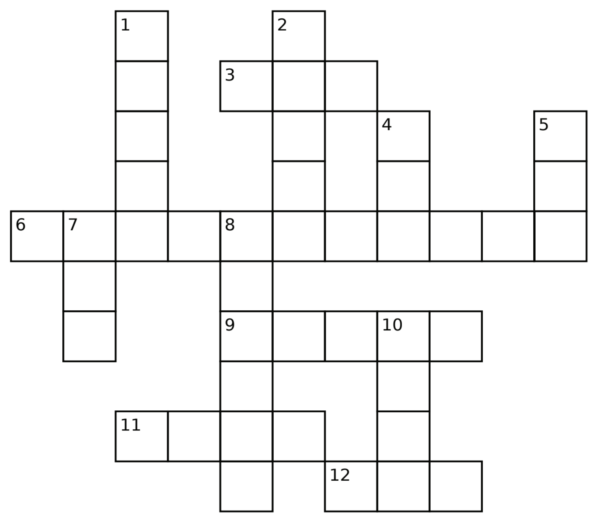Wordle sensation takes ETHS community by storm
It’s been hard to avoid the online word game that’s taking the internet by storm.
Created by software engineer Josh Wardle for his puzzle-loving partner, Wordle, a web-based word game, has ballooned to immense popularity. Having just 90 players in November 2021, the game is now estimated to have more than 36 million players. It has become a social media obsession, with thousands posting their results daily in a fierce competition of who can get that day’s word with the fewest amount of guesses.
Every 24 hours, Wordle allows users to find a predetermined five-letter word in as few guesses as possible. Players have six guesses to identify that day’s word. After each guess is made, the tiles behind each letter will be colored to show how close the guessed word is to the ‘correct’ one. A gray tile signifies that a letter isn’t included in the word, a yellow tile means that the letter is in the word but in the wrong place, and a green tile marks that the letter is both in the word and the right place.
Freshman Signe Harris is one of the countless people who dedicate a part of their mornings to the game.
“I like it because it’s so satisfying when you get the word—the adrenaline rush when you get all the greens,” Harris says.
As a way to showcase how a player fared, the game offers an opportunity to share results with others without actually spoiling the word for them. It does this by displaying each guess with a series of emoticons: gray, yellow, and green squares each representing the letters a person chose.
So why has this simplistic game become such a huge hit?
The contest-like aspect of the game contributes largely to its success.
“My husband and I have a competitive thing about it, like who can get it in fewer tries. So I think part of [why people like it] is competition,” English teacher Mara Neill explains.
Wordle has also had the extraordinary effect of bringing together families, friends, and even strangers.
“I showed my dad how to use it. He has not kept up with it, but he is an early-onset Alzheimer’s patient. So I’m always trying to give him things that could maybe help,” Neill says.
Harris has also formed bonds through the game.
“It helps me connect to my family, and it also helps me connect to those around me because everyone loves it.” Harris describes.
On Jan. 31, the New York Times bought Wordle for a price in the low seven figures. The game remains free, though there are some noticeable differences.
The most glaring change in the game is that as of Feb. 15, the New York Times version and the original website are now out of sync for some, as people have found themselves completing an original Wordle from the archives rather than the New York Times’ version. The solutions are not consistent between the two sites, leading to confusion as to what the actual word was. The discrepancy has also changed the nature of the game, as a large portion of the experience was sharing emoji solutions on social media.
Despite the new owners and possible solutions list, Wordle has at heart remained the same game social media has grown to love.
Your donation will support the student journalists of the Evanstonian. We are planning a big trip to the Journalism Educators Association conference in Nashville in November 2025, and any support will go towards making that trip a reality. Contributions will appear as a charge from SNOSite. Donations are NOT tax-deductible.







